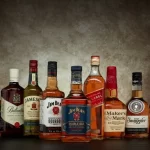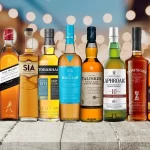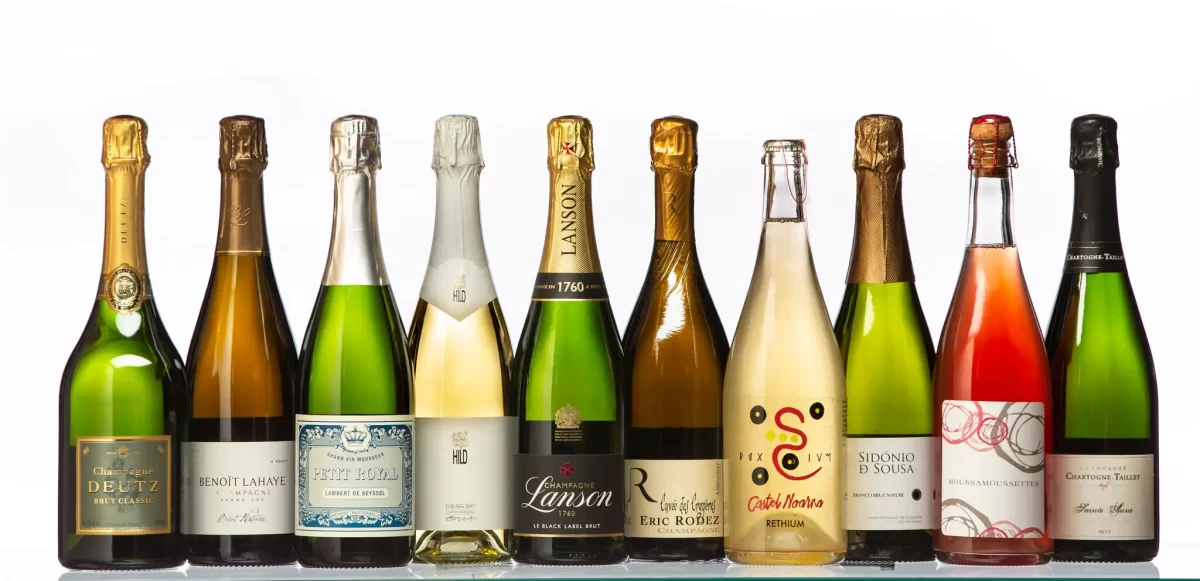
WHISKEY
June 16, 2024
World of Scotch Whisky: Tradition, Craftsmanship, and Distinction
June 16, 2024The World of Wine: A Journey Through History and Taste
Wine is more than just a beverage; it is a cultural artifact, a testament to human ingenuity, and a sensory journey that has captivated people for millennia. From the ancient vineyards of Mesopotamia to the renowned wine regions of today, the story of wine is rich with tradition, innovation, and an unending quest for perfection. Join us as we explore the fascinating world of wine, delving into its history, the craft of winemaking, and the delightful experience it offers to the palate.

A Historical Perspective: Wine Through the Ages
The history of wine dates back over 8,000 years to the early civilizations of Mesopotamia, present-day Georgia, and Iran. Archaeological evidence suggests that wine production began around 6000 BCE, with early winemakers using wild grapes to create rudimentary wines. As viticulture spread to ancient Egypt, Greece, and Rome, wine became an integral part of religious ceremonies, social gatherings, and daily life.
The Greeks and Romans made significant advancements in winemaking techniques, including the introduction of barrels for storage and the development of sophisticated cultivation practices. The Romans, in particular, were instrumental in spreading viticulture across Europe, laying the foundation for many of the world’s most famous wine regions, including France, Spain, and Italy.
The Art and Science of Winemaking
Winemaking, or vinification, is both an art and a science, requiring meticulous attention to detail, a deep understanding of the natural world, and a touch of creativity. The process begins in the vineyard,
where the quality of the grapes is paramount. Factors such as soil composition, climate, and grape variety all play crucial roles in determining the final character of the wine.
Once the grapes are harvested, they undergo a series of steps to transform them into wine. The primary stages of winemaking include:
Crushing and Pressing: Grapes are crushed to release their juice, which is then separated from the skins and seeds. For red wines, the skins are left in contact with the juice during fermentation to impart color and tannins.
Fermentation: Yeast is added to the grape juice to convert sugars into alcohol and carbon dioxide. This process can take anywhere from a few days to several weeks, depending on the type of wine being produced.
Aging: After fermentation, the wine is aged to develop its flavors and complexity. This can be done in stainless steel tanks, oak barrels, or a combination of both. The aging process can last from a few months to several years.
Bottling: Once the wine has reached its desired maturity, it is filtered, bottled, and sealed. Some wines are ready to drink immediately, while others may benefit from further aging in the bottle.
Exploring the World’s Wine Regions
Wine is produced in virtually every corner of the globe, with each region offering its own unique terroir—a term that encompasses the geography, climate, and cultural practices that influence the character of the wine. Some of the most celebrated wine regions include:
- Bordeaux, France: Known for its elegant and complex red wines, Bordeaux is home to some of the world’s most prestigious vineyards and châteaux.
- Tuscany, Italy: This picturesque region produces a variety of wines, including the renowned Chianti and Brunello di Montalcino.
- Napa Valley, USA: Famous for its robust Cabernet Sauvignon, Napa Valley is a leading wine destination with a diverse range of wineries and tasting experiences.
- Mendoza, Argentina: Nestled at the foothills of the Andes, Mendoza is acclaimed for its Malbec wines, which are rich, dark, and full-bodied.
- Barossa Valley, Australia: Known for its bold Shiraz, Barossa Valley combines traditional winemaking with modern techniques to produce wines of exceptional quality.
The Joy of Wine Tasting
Wine tasting is an experience that engages all the senses, from the visual appeal of the wine in the glass to the complex aromas and flavors that unfold with each sip. When tasting wine, consider the following steps:
Look: Observe the color and clarity of the wine. The hue can provide clues about the grape variety, age, and potential flavors.
Smell: Swirl the wine to release its aromas, then take a moment to inhale deeply. Identify the primary scents, such as fruit, floral, spice, or earthy notes.
Taste: Take a small sip and let the wine coat your palate. Pay attention to the balance of flavors, acidity, tannins, and overall mouthfeel.
Reflect: Consider the finish—the lingering taste that remains after swallowing. A long, pleasant finish is often a sign of a high-quality wine.
Conclusion: A Celebration of Wine
Wine is more than a drink; it is a celebration of nature, craftsmanship, and human creativity. Whether you’re enjoying a casual glass with friends or exploring the nuances of a fine vintage, wine offers a journey of discovery and delight. So raise your glass and toast to the enduring allure of wine—a true testament to the art of living well. Cheers!
Champagne
The World of Wine and Champagne: A Journey Through History and Taste
Wine and Champagne, two of the world’s most beloved beverages, have captivated people for centuries with their rich histories, diverse flavors, and cultural significance. This blog explores the fascinating journey of these drinks, from their origins to their modern-day appeal, and offers insights into what makes them so special.
The History of Wine: A Timeless Elixir
Wine’s history is as ancient as civilization itself. Evidence of wine production dates back to around 6000 BC in what is now Georgia. From there, winemaking spread to Egypt, Greece, and Rome, where it became an integral part of religious ceremonies and social life.
The Greeks and Romans were particularly influential in spreading viticulture throughout Europe. The Romans, with their advanced agricultural techniques, planted vineyards across their empire, including in France, Spain, and Germany. These regions would later becomesome of the world’s most famous wine-producing areas.
The Art of Winemaking
Winemaking is a delicate art that combines tradition and innovation. The process begins with the careful cultivation of grapevines. The type of grape, climate, soil, and vineyard practices all play crucial roles in the final product’s flavor profile.
Once harvested, the grapes are crushed to release their juice. Fermentation follows, where yeast converts the sugars in the grape juice into alcohol. This stage can vary significantly depending on whether the wine is red, white, or rosé. Red wine is fermented with the grape skins, which gives it its color and tannins, while white wine is typically fermented without skins.
Aging is another critical step. Wine can be aged in stainless steel tanks, oak barrels, or even in bottles. Each method imparts different characteristics to the wine. Oak barrels, for example, can add flavors of vanilla, spice, and toasted wood.
Exploring Wine Regions
Wine is produced worldwide, with each region offering unique varieties and styles. Some of the most renowned wine regions include:
- Bordeaux, France: Known for its prestigious red blends, primarily using Cabernet Sauvignon and Merlot grapes.
- Napa Valley, USA: Famous for its robust Cabernet Sauvignon and innovative winemaking techniques.
- Tuscany, Italy: Celebrated for its Chianti, made predominantly from Sangiovese grapes.
- Rioja, Spain: Renowned for its Tempranillo-based red wines, aged to perfection.
Each region has its own terroir—a combination of soil, climate, and geography—that influences the taste and quality of the wine.
Champagne: The Sparkling Jewel
Champagne, often synonymous with celebration and luxury, hails from the Champagne region of France. This sparkling wine undergoes a unique production process called méthode champenoise, where a secondary fermentation occurs in the bottle to create carbonation.
The history of Champagne is steeped in tradition. It was originally a still wine, but the cold climate of the Champagne region caused fermentation to stop in winter and restart in spring, creating natural bubbles. Over time, winemakers perfected the process, and Champagne became a symbol of elegance and festivity.
The Art of Champagne Making
Champagne is typically made from three main grape varieties: Chardonnay, Pinot Noir, and Pinot Meunier. The process starts with the creation of a base wine, which is then bottled with a mixture of sugar and yeast to initiate the second fermentation. The bottles are aged on lees (dead yeast cells) for at least 15 months, adding complexity and depth to the flavor.
After aging, the bottles undergo riddling, where they are gradually tilted and rotated to collect the lees in the neck. The lees are then removed through a process called disgorging, and the bottle is topped off with a dosage—a mixture of wine and sugar—to balance the flavor.
Wine and Champagne in Modern Times
Today, wine and Champagne continue to evolve, with winemakers experimenting with new techniques and varieties to cater to diverse tastes. Organic and biodynamic wines are gaining popularity, emphasizing sustainability and natural processes.
Wine and Champagne remain integral to celebrations and everyday enjoyment alike. From casual gatherings to grand events, these beverages bring people together, creating moments of joy and connection.
Conclusion: A Toast to Tradition and Innovation
Wine and Champagne are more than just drinks; they are embodiments of history, culture, and craftsmanship. Whether you prefer a full-bodied red, a crisp white, or a sparkling Champagne, each sip tells a story of tradition and innovation. So raise a glass and toast to the timeless allure of wine and Champagne—two beverages that continue to enchant and inspire. Cheers!



